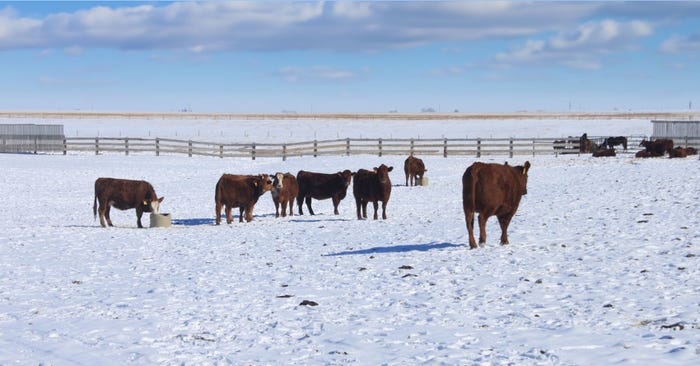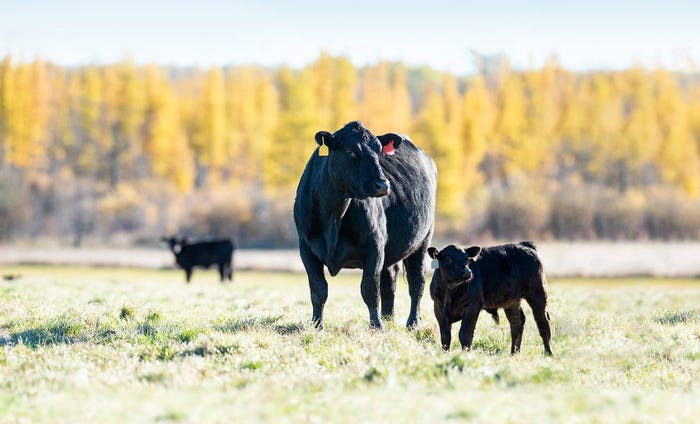Flax and balancing fatty acids in the diet for beef cattle performance
Like all things, it's about balance with fatty acids in beef cattle diets for optimal performance and health. Supplementing diets with flax can help.
March 1, 2024

Essential fatty acids and cattle performance
Fatty acids, like amino acids, minerals and vitamins are nutrients required by animals for maintenance and growth. Fatty acids are used for energy, cell membrane structure and integrity. However, essential fatty acids cannot be synthesized by the animal in adequate amounts for specific physiological processes such as growth, immune support, and reproduction and must be included in the animal’s diet.
Director of Research and Nutrition for New Generation Supplements Ethan Schlegel explains, “Cattle, sheep, and horses, like most mammals, cannot synthesize the essential polyunsaturated fatty acids, linoleic and alpha-linolenic acid (ALA). Linoleic acid is an omega-6 fatty acid, while alpha-linolenic acid belongs to the omega-3 family of fatty acids. These two fatty acids are vital components of cell membranes and serve as precursors for biologically active metabolites called eicosanoids. Eicosanoids have a beneficial impact on inflammation and the immune system, plus other essential functions such as reproduction.”
It is important to note that not all fat sources provide the same types of fatty acids, a key consideration when thinking about what cattle herds need to nutritionally support their performance. While lush cool season green grasses and legumes may be adequate sources of omega-3 fatty acids, levels drop off as the grasses mature. So, when omega‐3 fatty acids are found to be at a deficit for the specific grazing situation, supplementation in the diet is usually necessary, especially in bulls and breeding females where the breeding functions that are directly supported by omega-3 fatty acids, such as hormone modulation, cell integrity, and recovery, are of high importance.

Photo submitted by New Generation Supplements.
According to Schlegel, flax is a rich source of ALA. He says, “Flax has the highest level of omega-3s of plant sources. As such, flaxseed and flaxseed oil are also quality sources of ALA. Two areas where supplemental flax tends to work well are in reproductive performance and immune support. Reproductive support from a hormone signaling perspective, and immune support from an anti-inflammatory and recovery standpoint.”
Impacting reproductive performance
Poor sperm motility and presence of abnormalities in sperm morphology are two of the more common causes of poor fertility in males. Aberrations in sperm quality characteristics are key factors leading to disqualification of bulls in breeding soundness examinations. Fats are an essential component of sperm, and there is an increasing body of evidence suggesting that omega-3 fats lead to improvements in semen quality in many animals.
Schlegel says, “A study conducted at Kansas State University using flaxseed and flaxseed oil as the fatty acid source in tubs fed to breeding bulls showed 9% greater sperm motility and 21% more normal sperm than an un‐supplemented control group. Ranch trials have also shown similar results. In a study conducted in Missoula, Montana in a commercial herd with typical to the area management system, bulls supplemented with FlaxLic showed an 8% increase in sperm motility and 22% more normal sperm than the control group that were not supplemented.”
Omega-3 fatty acids have been shown to increase tissues concentrations of both alpha-linolenic acid and eicosapentaenoic acid. These omega-3 fatty acids are directly involved in synthesis of reproductive hormones that support fertility.

Photo submitted by New Generation Supplements.
“Flax supplementation has also shown efficacy in quicker breed back after calving. In a university study, a female herd that was supplemented with flax through their third trimester and calving showed an increase of almost 20% in ovulation within 30 days post-calving, and most cows cycling over 2.5 times by 60 days post-calving, an increase in 50% compared to the control group and historical ovulation cycles of the same herd.”
To learn more about supplemental flax, omega-3 fatty acids, and the supporting research, visit Omega 3 – New Generation Supplements (newgensupplements.com) (newgensupplements.com/omega-3/).
You May Also Like



.png?width=300&auto=webp&quality=80&disable=upscale)
